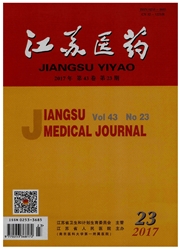

 中文摘要:
中文摘要:
目的探讨再生障碍性贫血免疫抑制治疗(IST)疗效的预测指标。方法选择接受IST的初诊再生障碍性贫血患者35例,回顾性分析患者年龄、确诊至IST时间和血环孢素A(CsA)浓度等指标与疗效的关系。结果35例患者随访6—12个月,总有效率71.4%。年龄≤40岁者有效率高于年龄〉40岁者(75.0%vs.66.7%)(P〈0.05);确诊至IST时间%23d者有效率为67.7%,确诊至IST时间≥23d者有效率为0。治疗有效者起始治疗第2、3周的CsA浓度高于治疗无效患者(P〈0.01)。结论再生障碍性贫血患者的年龄、确诊至IST的时间和起始治疗2、3周CsA浓度可作为IST疗效的预测指标。
 英文摘要:
英文摘要:
Objective To investigate the factors for predicting the efficacy of immunosuppressive therapy(IST) in the patients with aplastic anemia(AA). Methods Data of 35 patients with newly diagnosed AA were retrospectively reviewed. The relationship of the age, the time from diagnosis to IST, and blood concentration of cyclosporin A(CsA) and therapeutic efficacy was analyzed. Results The patients were followed up for 6-12 months with a total effectiveness rate of 71.4%. The effectiveness rate was higher in the patients younger than 40 years old than that in those older than 40 years old(75.0% vs. 66.7%)(P〈0. 05). The effectiveness rate of patients with an interval from diagnose to IST shorter than 23 days was 67.7 %, which was zero in those with an interval longer than 23 days. Blood concentration of CsA was higher in the cases response to the therapy on the 2nd and 3rd week than those without(225. 8 ng/ml vs. 143. 8 ng/rnl) and (296. 1 ng/ml vs. 166.3 ng/ml) (P〈0. 01). Conclusion Three factors of age, the time from diagnosis to IST, and blood concentration of CsA may be taken as the predicting indicators for the efficacy of IST.
 同期刊论文项目
同期刊论文项目
 同项目期刊论文
同项目期刊论文
 期刊信息
期刊信息
